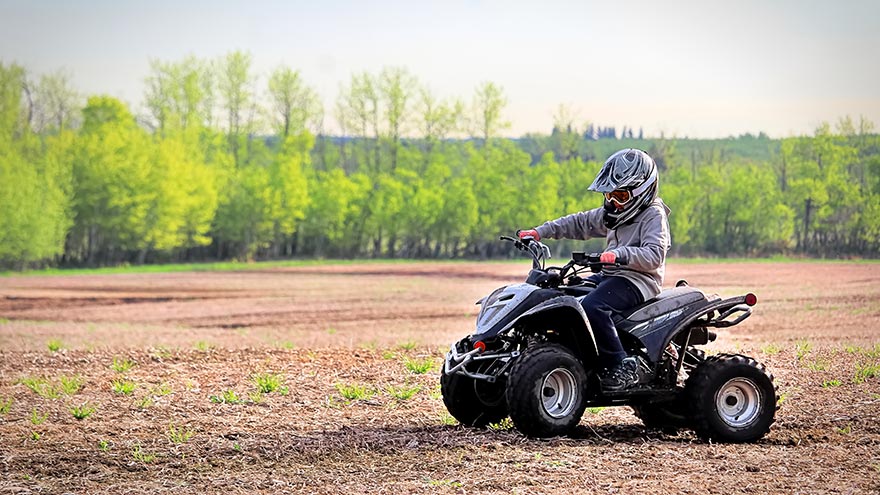Tips for Keeping Your Kids Safe on ATVs
By: Dr. Frieda Hulka, Pediatric Trauma Medical Director
September 02, 2022

In the state of Nevada, all-terrain vehicles (ATVs) are one of the pediatric population's top three mechanisms of injury. Kids under 16 are the leading victims of ATV incidents and fatalities because they cannot reach controls, cannot activate controls and they have a restricted field of vision.
Tips to Safely Utilize ATVs
ATVs are off-road vehicles used for activities such as off-roading and farm work. In the state of Nevada, it is legal for teens to ride them, even without a driver's license. However, even though it is legal for teens to ride these vehicles, it is not always safe.
Here are a couple of tips and tricks to stay safe while using ATVs:
- Be at least 16 years old. Health and safety experts strongly discourage ATV use by anyone younger than 16. Operating an ATV demands that drivers be skilled at making quick adjustments, such as speeding up, slowing down and shifting their weight to help turn the vehicle. People under 16 are less likely to have the physical strength and decision-making experience necessary to drive an ATV safely.
- Get safety certified. Before you ride an ATV on a trail, learn how to do it safely in a controlled setting. Visit the ATV Safety Institute's website for course information.
- Ride an ATV that's right for your size and age. Full-size ATVs can weigh more than 600 pounds and be very difficult to handle. Select an ATV designed for you or your child's age group. This sizing can be found on the manufacturer's warning label right on the vehicle.
- Always wear an approved helmet and eye protection. The best helmets for ATV use have a full-face shield and meet Department of Transportation safety standards. Many helmets have flip-down visors for eye protection. If yours doesn't, be sure to wear shatterproof goggles and not just sunglasses.
- Wear long pants, long sleeves, gloves and over-the-ankle boots. ATVs have a high center of gravity and no safety cages, roll bars or seatbelts. If they tip, you can fall off. Protective clothing will help prevent scrapes and cuts if you get thrown from an ATV.
- Always ride at a safe speed on a trail meant for ATV use. When ATVs get going fast, they become less stable and more likely to tip. ATV tires are not meant for pavement or high speeds. Both factors can make turning an ATV difficult and dangerous.
Safe Kids Washoe County
Safe Kids Washoe County is led by Renown Health and uses evidence-based programs such as car-seat checkups, safety workshops and sports clinics to help parents and caregivers prevent childhood injuries.
Finally, here are some absolute ATV Nos:
- Never ride on a 3-wheel ATV.
- Never ride an ATV at night.
- Never ride while under the influence of alcohol or drugs.
- Never ride on paved surfaces or public roads (except to cross them).
- Never exceed the number of passengers recommended by the manufacturer.
- Teens should never give a passenger a ride, even if they have a two-person ATV.
Even when all the safety rules are followed, some accidents can still happen. By following the dos and don'ts listed above, we can help to reduce the number of injuries from ATV accidents.
If you're going to ride an ATV, knowing how to use one safely and following every safety tip can make an accident less likely and help prevent serious injuries if an accident does happen.
